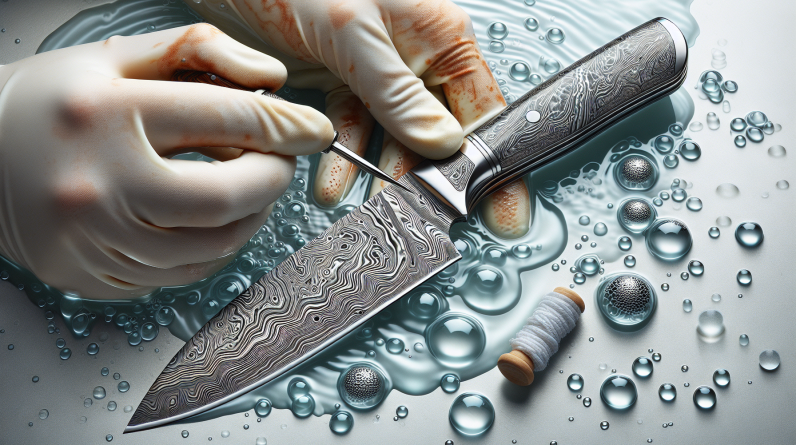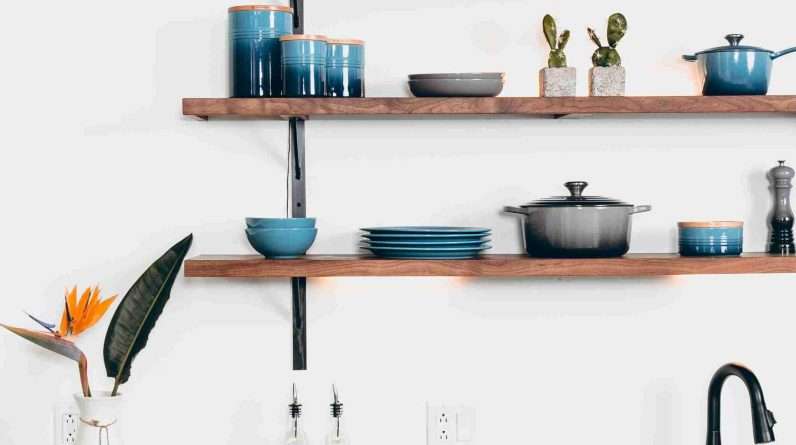Let’s set the record straight on kitchen knives! There are quite a few common misconceptions floating around about these trusty tools, and we’re here to debunk them. From the belief that a sharper knife is more dangerous to the idea that all knives are created equal, we’re ready to shed some light on the truth. So grab your cutting board and join us as we slice through the misunderstandings and myths surrounding kitchen knives. Get ready to become a cut above the rest!
Blades
All knives have the same type of steel
One common misconception about kitchen knives is that all blades are made from the same type of steel. In fact, there are many different types of steel used in knife blades, each with its own unique properties. Some knives are made from high-carbon stainless steel, which is known for its durability and ability to hold a sharp edge. Others may be made from a softer stainless steel, which is easier to sharpen but may need more frequent maintenance. It’s important to choose a knife with the right type of steel for your needs and to take into consideration factors such as sharpness retention and corrosion resistance.
Sharp knives are more dangerous
Contrary to popular belief, sharp knives are actually safer to use than dull ones. When a knife is dull, it requires more force to cut through food, increasing the likelihood of accidents and injuries. A sharp knife, on the other hand, effortlessly slices through ingredients with minimal effort, reducing the risk of slips and mishaps. It is important to use caution and proper technique while using any knife, but having a sharp blade can actually help to prevent accidents in the kitchen.
Serrated knives don’t need sharpening
Another common misconception is that serrated knives do not need to be sharpened. While it is true that serrated knives have a different cutting edge than traditional straight blades, they still require regular sharpening to maintain their effectiveness. Serrated knives have small, scalloped serrations along the edge, which can become dull over time. To keep a serrated knife performing at its best, it is necessary to use a special serrated knife sharpener or have it professionally sharpened. By maintaining the sharpness of a serrated knife, you can ensure clean and precise cuts every time.
Maintenance
Dishwasher safe means no maintenance is needed
When it comes to maintenance, many people mistakenly believe that if a knife is labeled as dishwasher safe, it requires no additional care. While dishwasher safe knives can withstand the harsh detergents and high temperatures of a dishwasher, it is still important to maintain the blade’s sharpness. The process of washing and drying in a dishwasher can cause a knife’s edge to become dull over time. To keep your dishwasher safe knives performing at their best, it is recommended to hand wash and dry them immediately after use, and periodically sharpen the blades to maintain their edge.
Knives should be sharpened regularly
It is a common misconception that knives only need to be sharpened when they become dull. In reality, knives should be sharpened regularly to maintain their optimal cutting performance. The frequency of sharpening depends on the frequency of use and the type of knife, but as a general rule of thumb, it is recommended to sharpen your knives every three to six months. Regular sharpening helps to remove any nicks or burrs in the blade, ensuring a smooth and efficient cutting experience. Investing in a good quality knife sharpener or taking your knives to a professional for sharpening can greatly extend their lifespan and ensure they remain in peak condition.
Honing and sharpening are the same
Another misconception about knife maintenance is that honing and sharpening are interchangeable. In reality, honing and sharpening are two distinct processes that serve different purposes. Honing, which is typically done using a honing steel or rod, helps to straighten and realign the blade, keeping it in optimal shape between sharpening sessions. Sharpening, on the other hand, involves removing a small amount of material from the blade to restore its cutting edge. While honing can help maintain a sharp edge, it is not a substitute for sharpening. Both honing and sharpening are important steps in knife maintenance and should be done regularly to keep your knives in top condition.
Storage
A knife block is the best way to store knives
When it comes to storing knives, many people believe that a knife block is the best option. A knife block not only keeps your knives organized and readily accessible, but it also helps to protect the blades from damage. The individual slots in a knife block keep each knife securely in place, preventing the blades from coming into contact with other utensils or surfaces that could dull or chip them. Additionally, the upright position allows for proper air circulation, preventing moisture buildup that can lead to corrosion. Investing in a high-quality knife block is a great way to store your knives safely and extend their lifespan.
Storing knives in a drawer is always dangerous
A common misconception is that storing knives in a drawer is always dangerous. While it is true that storing knives loosely in a drawer can pose a risk of accidents, there are ways to safely store knives in a drawer. One option is to use a knife organizer or tray with individual slots that securely hold each knife in place. This prevents them from being jostled around or coming into contact with other objects that could damage the blade. It is important, however, to exercise caution when reaching into a drawer with stored knives and to be mindful of their placement to avoid accidental cuts or injuries.
Magnetic knife holders cause blades to become dull
Many people believe that storing knives on a magnetic holder can cause the blades to become dull. However, this is not necessarily true. Magnetic knife holders can be a convenient and space-saving way to store knives, as they keep them easily accessible and visible. When properly maintained and cleaned, magnetic knife holders do not damage or dull the blades. The important key is to ensure that the magnetic strip or holder is clean and free from any debris that could cause scratches or damage to the blade. Regularly wiping down the magnetic holder and keeping it in good condition can help prevent any potential issues.
Knife Use
Knives should only be used on a cutting board
One common misconception about knife use is that knives should only be used on a cutting board. While it is true that using a cutting board provides a stable and safe surface for cutting, there are some instances where using a knife on other surfaces may be acceptable. For example, using a knife to slice through a watermelon rind or to peel a vegetable directly in your hand can be done safely with proper technique and control. It is important, however, to never use a knife on hard surfaces such as glass or metal, as this can cause damage to both the knife and the surface.
Using a knife as a multitool is fine
Many people mistakenly believe that it is acceptable to use a knife as a multitool for various tasks in the kitchen. While it may seem convenient, using a knife for tasks such as opening cans or prying lids can actually be quite dangerous. Knives are specifically designed for cutting and slicing, and using them for other purposes can put excessive stress on the blade and handle, potentially causing damage or injuries. It is best to use the appropriate tool for each task and to treat your knives with care and respect to ensure their longevity and safe use.
Knives should be used with a lot of force
It is a common misconception that knives should be used with a lot of force in order to cut through ingredients. In reality, using excessive force can actually lead to accidents and injuries. A sharp knife should do most of the work for you, requiring only a gentle downward motion to make clean and precise cuts. Forcing a knife through food can cause the knife to slip or the ingredient to shift, increasing the risk of cuts. It is important to let the knife do the work and to use a steady, controlled motion when cutting to ensure both your safety and the quality of the cut.
Price
Expensive knives are always better
One misconception surrounding kitchen knives is that expensive knives are always better in terms of quality and performance. While it is true that high-end knives often come with superior craftsmanship and use higher-quality materials, this does not mean that lower-priced knives are incapable of delivering excellent performance. The price of a knife is influenced by various factors such as brand reputation, materials used, and craftsmanship. It is possible to find affordable knives that are well-made, durable, and able to maintain a sharp edge with proper care. Ultimately, it’s important to consider your budget, cooking needs, and personal preferences when choosing a knife.
Cheap knives are a waste of money
Conversely, it is also a misconception that cheap knives are a waste of money. While it’s true that some inexpensive knives may lack the durability and longevity of higher-priced options, this is not always the case. Affordable knives can still offer good value for money if they are made from quality materials, properly maintained, and used for their intended purposes. Additionally, budget-friendly knives can be a practical choice for those who are just starting to build their collection or for those who prefer to have multiple knives for different tasks. With proper care and regular sharpening, even a budget knife can perform admirably in the kitchen.
In conclusion, there are several common misconceptions about kitchen knives that may affect our understanding of their maintenance, use, and storage. Understanding the truth behind these misconceptions can help us make informed decisions when it comes to purchasing, using, and caring for our knives. By debunking these myths, we can ensure a safer and more enjoyable experience in the kitchen, allowing us to unleash our culinary creativity with confidence.










